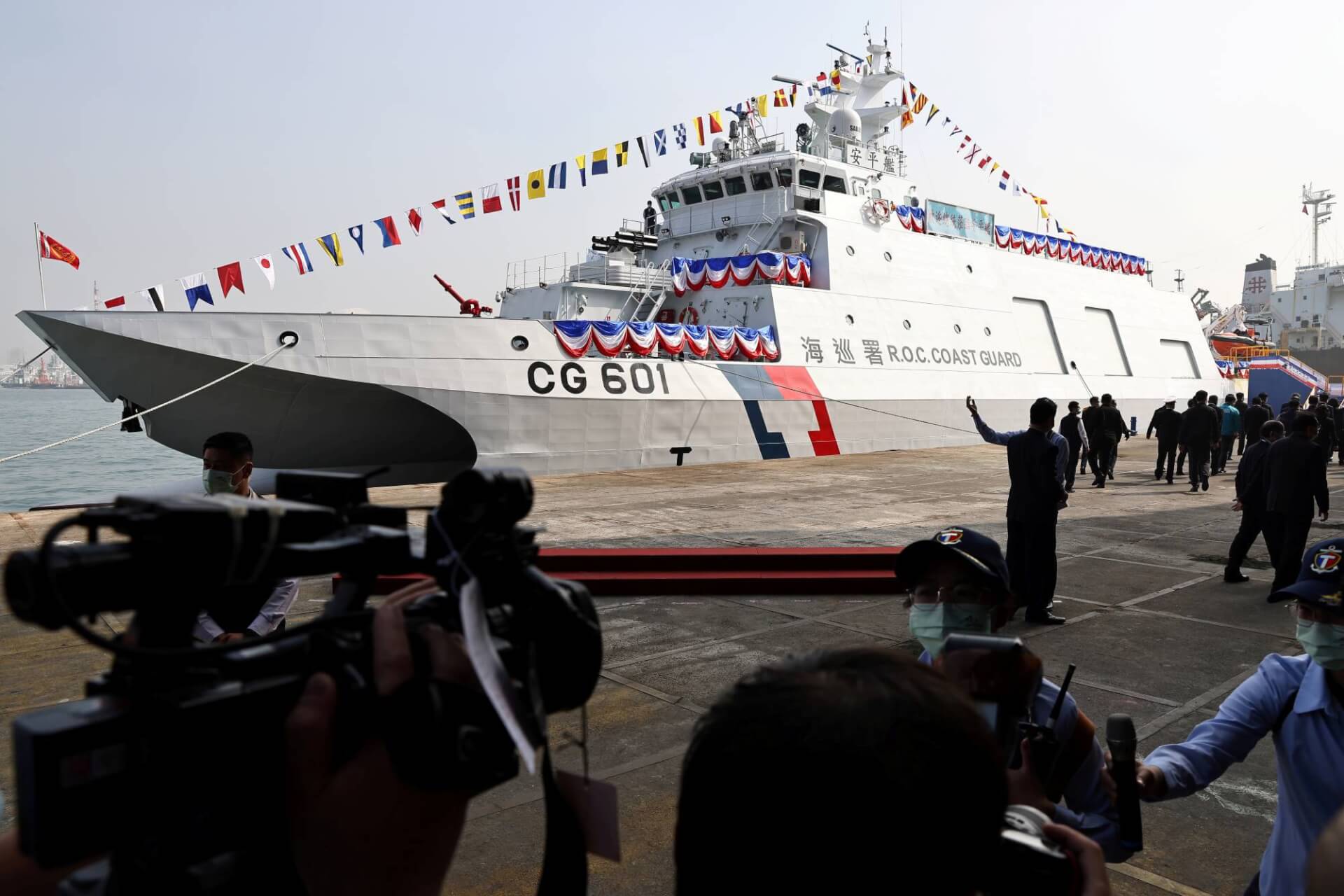The United States (US) signed a memorandum of understanding (MoU) with Taiwan in Washington on Thursday in the pursuit of countering China’s aggressive maritime manoeuvres in the region. According to President Tsai Ing-wen, the new pact establishes a Coast Guard Working Group (CGWG) between the two sides “for communication and information sharing, and to build a stronger partnership on maritime rescue missions and maritime law enforcement.”
The move is a response to Bejing’s new China Coast Guard (CCG) Law, which took effect on February 1, that militarised the CCG and brought it under the centralised command of the Chinese Communist Party Central Committee and the Central Military Commission. China’s new law empowers the CCG to use “all necessary means,” including the use of force, against foreign vessels that enter waters that Beijing deems to fall under its own territory. In addition, structures formed by other countries on its waters can also now be demolished by the CCG.
“China’s coast guard law is shocking to its neighbouring countries,” Taiwan Premier Su Tseng-chang told reporters at the legislature. “So countries are working together based on shared values in an effort to maintain regional peace and stability.” Taiwan’s chief representative in the US, Bi-khim Hsiao, said in a tweet on Friday that the MoU with the US intends to strengthen cooperation in “maritime safety, humanitarian rescue, fisheries enforcement and protection of the marine environment”. The US State Department’s Bureau of East Asian and Pacific Affairs added in a tweet that “The U.S. could not be prouder to work side-by-side with such a good friend as Taiwan to tackle the world’s challenges.”
The Chinese Foreign Ministry reacted by warning the US to “be cautious with its words and actions on Taiwan-related issues.” In a daily briefing, spokesperson Hua Chunying urged the US to “refrain from sending any wrong signals to Taiwan independence forces, and refrain from encouraging and inciting Taiwan to expand its so-called international space.”
Chinese air and water incursions in territories and air defence identification zones (ADIZ) of other states in the region have increased substantially in recent years. Just yesterday, Chinese ships entered Japan’s territorial waters off the Senkaku Islands in the East China Sea. According to Japanese Coast Guard officials, the vessels intruded into Japan’s waters off Minamikojima Island on early Monday. According to Japanese media, this is the 11th incident this year of Chinese vessels entering Japan’s territorial waters off the Senkaku Islands.
Similarly, between January 1 to November 30, 2020, Taiwan reported 380 aircraft flying into the zone’s southwest corner on 91 occasions. This was the highest recorded number since 1996, when China conducted a series of ballistic missile tests in the waters around Taiwan at the same time that the country conducted its first direct presidential elections. In 2019, Taiwan reported the highest number of long-distance training missions by the Chinese military; they were conducted around the Taiwan Institute for National Defence and Security Research. Furthermore, on December 21, a Chinese aircraft carrier, the Shandong, sailed through the Taiwan Strait to reach the South China Sea for routine military drills. Due to the constant and multiple violations of airspace and territorial waters by the Chinese military, the Taiwanese Ministry of National Defence (MND) has now started publishing movements of Chinese planes on its website.
In response to the CCG law and rising Chinese incursions, other states, like the Philippines and Vietnam, have also lodged protests against Beijing’s maritime aggressiveness. Last Thursday, the Philippines military ordered the increased deployment of navy ships to the South China Sea to help carry out “sovereignty” watches amid a growing diplomatic row with China over its ships parked near the disputed Whitsun reef. Manila believes that the close proximity of the vessels is a “swarming and threatening presence,” and “an incursion of its sovereign territory.” Similarly, Vietnam’s foreign ministry also urged China to “stop this violation and respect Vietnam’s sovereignty.” The Whitsun Reef is located on the northeast border of the Spratly Islands, which are claimed by both Hanoi and Beijing.
US Forms Coastguard Working Group With Taiwan to Guard Against Chinese Maritime Aggression
The move is a response to Bejing’s new China Coast Guard (CCG) Law, which took effect on February 1, that militarised the CCG.
March 30, 2021

SOURCE: ANN WANG, REUTERS
